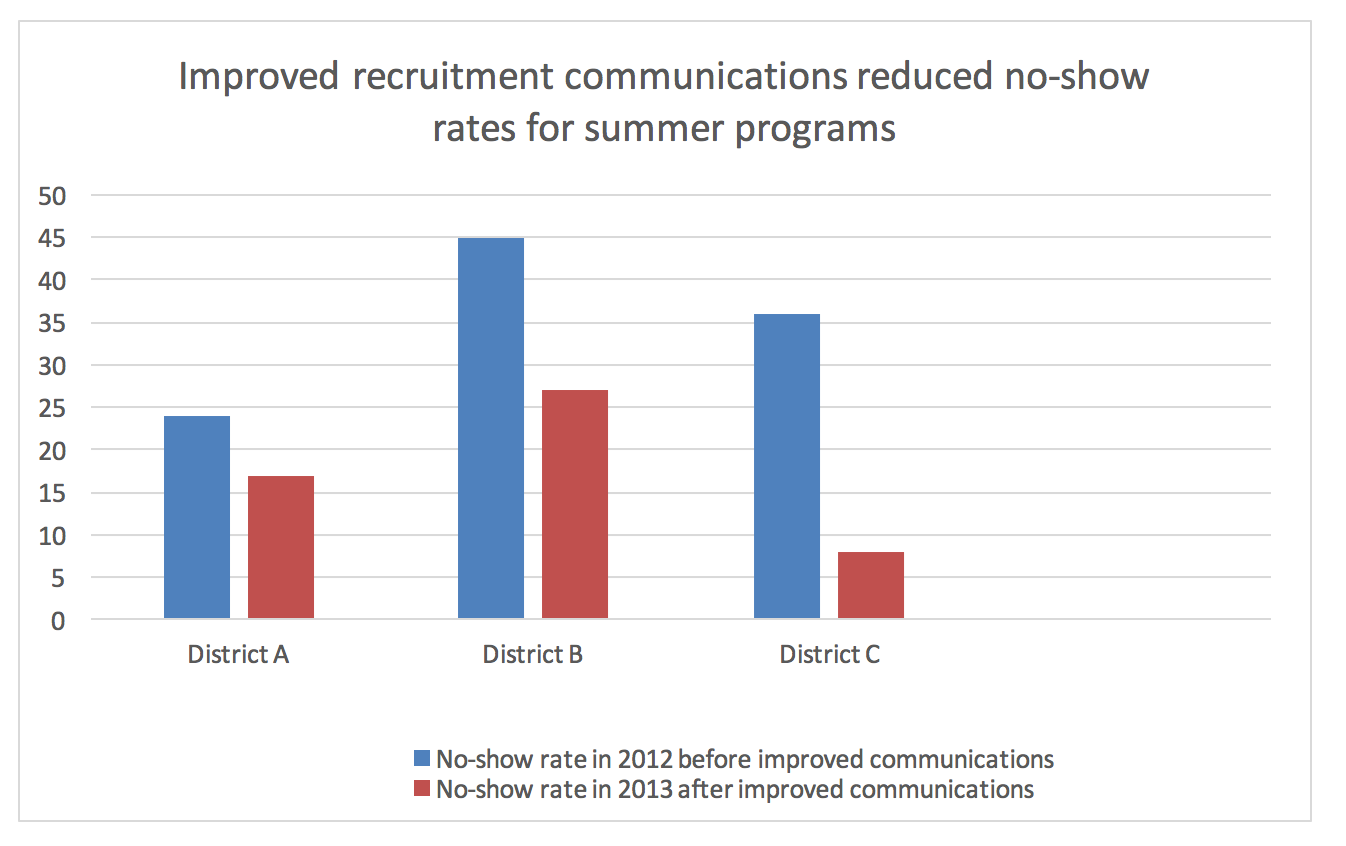Breadcrumb
- Wallace
- Toolkits
- Summer Learning Recruitment Guid...
Summer Learning Recruitment Guide

How to Get the Word Out on Summer Learning
This guide is based on lessons from the National Summer Learning Project (NSLP), the largest study ever to look at whether and how large-scale, voluntary summer learning programs offered by public school districts can help improve educational outcomes for children. For more information on the details of the project and to see the research published to date, visit our knowledge center.

National Summer Learning Project (NSLP)
Can large urban school districts successfully run high-quality summer learning programs? If so, how can they do it? And what impact can these programs have on students?
These are three of the questions Wallace, the RAND Corporation and five urban school districts (Boston; Dallas; Duval County, Florida; Pittsburgh; and Rochester) have been exploring as part of the National Summer Learning Project, a six-year effort to provide voluntary, district-led summer programs that offer a mix of academic instruction and enrichment—and test whether they help boost students’ success in school. To find out the answers, RAND conducted a randomized controlled trial (RCT), the largest of its kind.
The RCT focused on students who were in 3rd grade in spring, 2013. Students who signed up to take part in the districts’ summer learning programs were randomly selected to participate or not participate in the program for two summers (2013 and 2014). RAND has continued to gather a wide range of data from both groups of students through the 7th grade, including school year grades and attendance, student performance on standardized tests of math and reading, and measures of social-emotional skills. To learn more about the study and the results published to date, visit the summer learning section of The Wallace Foundation’s Knowledge Center.

The opportunity gap is real. Upper-income parents spend nearly 7 times more on enrichment activities
— Source: Russel Sage Foundation
Let’s close the opportunity gap.
Because the study randomly placed children in two groups--those selected to take part in the summer learning programs and those who were not--districts had to recruit more than twice as many students as they had in the past: a total of more than 5,600 who were in the 3rd grade in 2013. The districts took a targeted approach to recruitment to ensure they reached the children most likely to benefit from the programs.

The five school districts and their partners exceeded their recruitment goals, ensuring the success of the study.
What support did the school districts receive?
The five districts were selected because of their commitment to and experience operating summer learning programs. Yet even these districts needed help with recruitment. The Wallace Foundation engaged Crosby Marketing Communications, a communications firm with a strong background in social marketing (i.e. using the principles of marketing to promote the common good or encourage positive, healthy behaviors), to collaborate with and support the districts.
Crosby played the role of coach, helping the districts develop written recruitment plans, create messaging, establish protocols for tracking recruitment activities and registrations, and identify potential solutions when recruitment numbers lagged.
How information was gathered for this guide
The advice presented in this guide is based primarily on the experiences of the districts that participated in the project and their partners, as well as the observations of Crosby and the Wallace team and focus groups conducted with parents. While it is directly relevant to public school districts, we believe much of it may be applicable to other institutions that need to effectively engage parents, such as community-based organizations.
The five districts’ success in recruitment
The five districts and their partners each designed and carried out an effective recruitment program, exceeding their recruitment goals and ensuring the ultimate success of the study.

Getting parents to register their children was just one step. The districts and their partners also needed to get the children to show up on day one of their programs. In the year before the RCT, the percentage of children who registered but never attended was as high as 45 percent. In the summer of 2013, however, in the districts for which we have data, the districts and their partners were able to significantly reduce no-show rates by improving outreach to parents and students.

Along with program registration and first-day attendance, ongoing attendance was the third objective of the districts' outreach to parents and students. Increasing attendance over the course of the summer remained a consistent challenge for the districts, though some saw improvement by focusing on building a warm and welcoming culture and helping students develop relationships with staff and other students. While this guide does not cover efforts to promote ongoing attendance, you can learn more by reading RAND’s report Learning from Summer: Effects of Voluntary Summer Learning Programs on Low-Income Urban Youth.

Children from low-income families take part in out-of-school activities at half the rate of their more affluent peers.
— Source: U.S. Census Bureau
For many students, summer learning will open new worlds.
This Guide's Three Steps
Follow this guide's 3 steps.
Get Started
- The importance of a recruitment program - The research behind this guide - Putting together your team
Develop Your Strategy
- What parents think about summer learning - Building the foundation for your recruitment program - Best practices for recruitment
Create Your Game Plan
- Proven tactics from experienced districts - What’s essential, what’s recommended and what’s optional - How to manage the work
GET THE LATEST UPDATES
